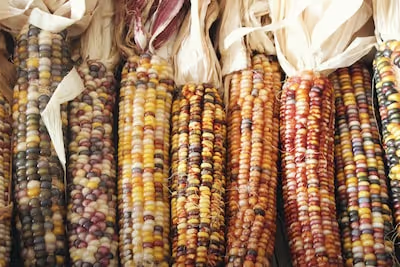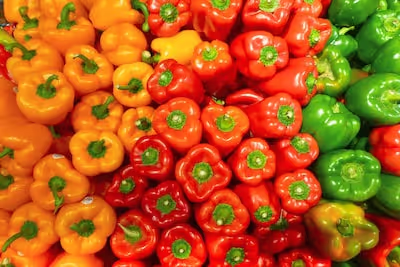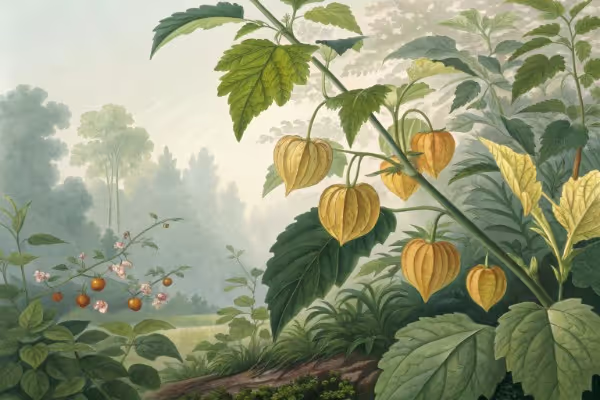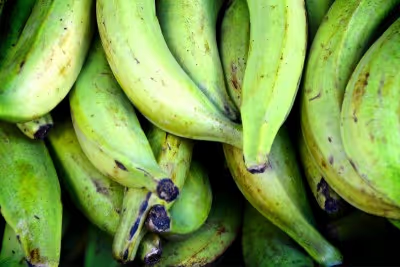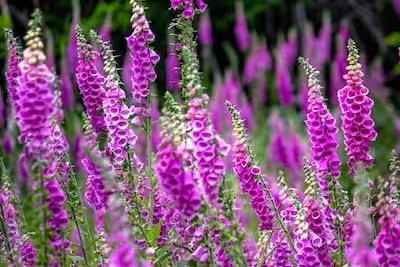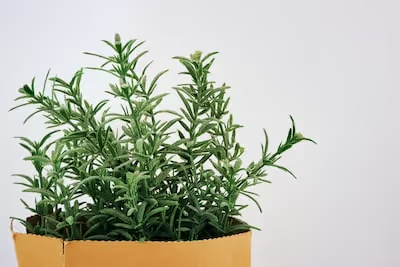Growing Basil From Seed: A Simple Guide for Gardeners
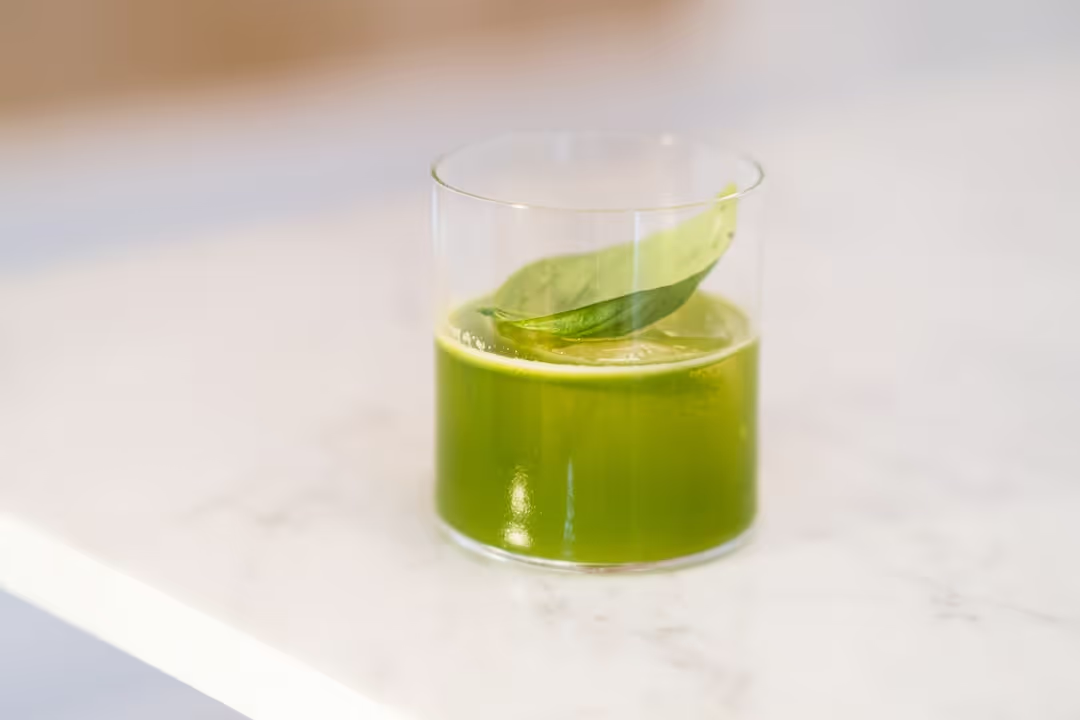
Growing Basil
Growing basil from seed demands warmth, bright sun, and moist soil. Start your seeds indoors six weeks before the last frost date, planting them shallowly and keeping them damp for reliable germination. Once seedlings sport true leaves, transplant outdoors into fertile, sunny beds—and soon you'll be plucking fragrant basil leaves, ready to liven up your pasta, pizza, and cocktails all summer long.
Cheatsheet: Basil Seed Starting Essentials
🌱 Best Timing & Germination
- Start Indoors: 6 weeks before last frost
- Seed Depth: 1/4 in (0.6 cm) lightly cover
- Germination Temp: 70–75°F (21–24°C)
- Sprout Time: 5–10 days
- Avg. basil germination rate: 90%+
🧰 Tools and Products You'll Need
- Basil seeds (Genovese, Thai, Lemon, etc.)
- Seedling trays or pots
- Sterile seed-starting mix
- Humidity dome/plastic wrap
- Grow light or sunny windowsill
- Spray bottle for misting
🌤️ Light & Water
- Light: 14–16 hrs/day (artificial or direct sun)
- Water: Keep surface moist, not soggy
- Tip: Avoid overhead watering.
🌡️ Transplanting Outdoors
- Wait for: Night temps ≥ 50°F (10°C)
- Spacing: 12 in (30 cm) apart
- Soil: Well-drained, rich, neutral pH (6–7)
✂️ Pinching & Harvesting
- First Pinch: Above 2nd leaf set (4–6" / 10–15 cm tall)
- Harvest: Morning, before flowering for best flavor
- Regular picking = bushier growth
- 1 cup fresh basil = 18% RDA vitamin K
🔁 Simple How-To Steps
- Fill pots with moist seed-starting mix.
- Sow 2 seeds/pot, 1/4 in (0.6 cm) deep.
- Cover lightly, mist surface, cover with dome.
- Place warm, bright spot. Remove dome at sprout.
- Thin to 1 seedling per pot when true leaves show.
- Transplant outside after last frost, spacing 12 in (30 cm).
- Pinch tips for fuller plants. Harvest leaves often.
🌿 Self-Sufficiency & Nutrition
- Homegrown basil: less waste, richer oils, max nutrients
- Rich in antioxidants, anti-inflammatory compounds
- Fresh leaves elevate salads, sauces, teas
-
Growing Basil From Seed: A Simple Guide for Gardeners
I start basil like I brew coffee, same time each spring, because consistency stacks the odds. The payoff is a summer of pesto, caprese, and that peppery perfume when you brush the leaves.
Seed Selection That Sets You Up
Choose fresh seed within 3 years for strong germination, and store it cool and dry. I keep packets in a jar with silica gel in the fridge at 40 F 4 C.
- Genovese types: classic pesto flavor, big leaves, dependable.
- Downy mildew resistant: Prospera, Devotion DMR, Rutgers Obsession DMR, Amazel, Eleonora.
- Heat lovers: Thai, Lemon, Mrs. Burns’ Lemon, and Cinnamon handle hot patios well.
- Compact containers: Spicy Globe and Dolce Fresca stay tidy on windowsills.
- Color and punch: Red Rubin or Dark Opal bring anthocyanins and drama to salads.
My Gear Shortlist for Foolproof Starts
- Seed trays or soil blocks with a sterile seed starting mix based on peat or coco, plus perlite.
- Gentle LED shop lights at 4000 to 6500 K, set 4 to 8 inches 10 to 20 cm above seedlings.
- Heat mat with thermostat for 70 to 80 F 21 to 27 C media temps during germination.
- Bottom-watering tray, a small fan, and a squeeze bottle for targeted watering.
- Balanced fertilizer for seedlings at 50 to 100 ppm N, or fish and seaweed feed at half strength.
Sowing Step by Step
Fill cells with pre-moistened mix that clumps when squeezed but does not drip. Sow 2 to 3 seeds per cell at 1/8 inch 3 mm deep, then mist to settle.
Cover loosely with a humidity dome until you see green, then vent daily. I move the dome off after 70 percent germinate to cut disease pressure.
Light, Heat, and Humidity Targets
Keep media 70 to 80 F 21 to 27 C for sprouting, then 65 to 75 F 18 to 24 C for steady growth. Run lights 14 to 16 hours daily with 200 to 400 µmol m-2 s-1 for stout seedlings.
Airflow matters, so crack a window or run a fan on low. High humidity invites problems, so I aim for 45 to 60 percent once they have true leaves.
First Watering and Feeding
Bottom-water until the surface barely darkens, then drain well. Start feeding at the first true leaf with a gentle nutrient solution weekly.
Soil pH near 6.0 to 7.0 keeps nutrients available. If leaves yellow between veins, bump nitrogen slightly or check pH before chasing ghosts.
Thinning, Pinching, and Potting On
Thin to one strong seedling per cell with scissors, never yank. Pinch the tip above the second or third node once plants have 4 to 6 true leaves for bushy growth.
Pot up to 4 inch 10 cm containers once roots knit the plug. Do not up-pot into cold, wet media, since basil sulks in a fridgey substrate.
Hardening Off and Planting Out
Harden off 7 to 10 days with gradual sun and breeze, then transplant after nights stay above 50 F 10 C. Space 10 to 12 inches 25 to 30 cm in rich, draining soil with full sun.
Mulch lightly once soil warms to 60 F 16 C to hold moisture without chilling the roots. I like a thin layer of shredded leaves or straw.
Water and Nutrition Outside
Water deeply, then let the top inch 2.5 cm dry before watering again. A monthly side-dress of compost or a light liquid feed keeps stems tender and leaves sweet.
Overfeeding pushes lush growth that tastes flat. I aim for steady, not explosive, and prune often to keep oils concentrated.
Harvest Rhythm That Never Fails
Harvest tops, not singles, and always cut to a pair of leaves so two shoots replace one. Never strip more than one third of a plant in a single go.
Morning harvest tastes brighter and keeps longer. If flowers appear, pinch them and cook a quick syrup with the buds for cocktails.
Common Problems, My Field Notes
- Damping off: stems pinch at soil line and collapse. Fix by ditching domes early, adding airflow, bottom watering, and using clean media.
- Downy mildew: yellow between veins, fuzzy gray underside, fast spread in cool, humid air. Grow resistant cultivars and water early so leaves dry by night.
- Aphids and whiteflies: blast with water, release lacewings if you like bio-controls, and use insecticidal soap under leaves.
- Fusarium wilt: one-sided wilt and brown streaking. Pull plants and rotate, since the pathogen lingers in soil.
- Leggy seedlings: lights too high or weak. Drop lights to 4 to 6 inches 10 to 15 cm and add a fan for sturdier stems.
“Optimal germination occurs at 21 to 27 C 70 to 80 F, with seedlings ready to transplant once frost risk passes.” Source: Royal Horticultural Society, Basil growing advice.
“Basil downy mildew thrives in humid conditions, spreads by airborne spores, and removal of infected plants helps limit spread.” Source: UC Statewide IPM Program.
Indoor Basil Year Round
Indoors I run lights 16 hours and keep room temps near 70 F 21 C. A bright south window can work, but winter sun rarely matches a steady LED panel.
Rotate pots weekly so plants do not lean. Keep roots snug in a 6 to 8 inch 15 to 20 cm container for flavor-dense leaves.
Hydroponic Basil Basics
Set pH at 5.8 to 6.2 and EC at 1.2 to 1.8 mS cm-1 with solution temps 68 to 72 F 20 to 22 C. I aim for a daily light integral near 14 to 18 mol m-2 d-1 for speed and oil content.
Prune often to keep canopies airy in NFT or DWC channels. Keep airstones clean, since low oxygen makes roots limp and invites trouble.
Soil Building and Companions
Work in well-finished compost and a little rock dust if your soil tests short on potassium. Basil pairs nicely with tomatoes and peppers in warm beds where airflow is honest.
A living mulch of low clover can cut splashing soil on leaves. That also feeds the microherd that basil enjoys around its roots.
Flavor, Scent, and Sun
Full sun with moderate stress increases essential oils, which sharpens flavor. Too little light leaves plants soft and minty without the pepper bite.
Heat above 95 F 35 C can scorch. I throw up a bit of shade cloth on scorching afternoons to keep leaves tender.
Post-Harvest Tricks
Do not refrigerate fresh basil below 50 F 10 C or leaves blacken. I keep stems in a jar of water on the counter and change water daily.
For storage, blitz with olive oil and freeze in trays, or dehydrate at 95 F 35 C to keep color. Dried basil tastes different, so I label jars by method.
Varieties Worth Your Time: A Quick Listicle
- Prospera DMR: resistant to downy mildew with true Genovese flavor.
- Rutgers Devotion DMR: nice texture, reliable in humid summers.
- Amazel: sterile, long harvest window, handles heat and keeps branching.
- Thai Basil: anise-clove kick that laughs at wok heat.
- Mrs. Burns’ Lemon: citrus top notes in iced tea and fish.
- Dolce Fresca: compact for patios, high leaf-to-stem ratio.
Numbers That Help You Decide
One healthy plant can give several cups of leaves monthly in peak season, which covers weekly pesto. A 10 foot 3 m row yields enough for sauce, drying, and friends.
Seed, mix, and lights pay back fast compared to buying clamshells. I track harvests, and indoor setups often break even in a single winter.
Seed Saving and Isolation
Basil is insect pollinated and cross-pollinates between varieties, so isolate by 150 feet 45 m if you want true-to-type seed. Let a few branches flower late, dry on the plant, then bag and crumble.
Store cleaned seed in paper inside a jar with desiccant at 40 F 4 C. Viability can hold 3 to 5 years with low humidity.
FAQ From My Inbox
Leaves taste bitter. That often points to heat stress, late harvest, or low potassium, so pick earlier and feed lightly with a K-forward organic blend.
Plants keep bolting. Pinch hard and often, and keep night temps under 75 F 24 C if indoors.
Yellow leaves at the bottom. That is either shade or hunger, so thin foliage and give a light feed.
Spots on leaves after rain. Improve spacing, water at soil level early in the day, and switch to a mildew-resistant variety next round.
Field Notes, With Receipts
“Basil grows best in warm conditions and does not tolerate frost, so delay planting outdoors until minimum temperatures are 10 C 50 F.” Source: Royal Horticultural Society.
“Downy mildew of basil was first reported in the U.S. in 2007 and has since spread widely in production and home gardens.” Source: Cornell University Vegetable Program.
“Maintain good air circulation and avoid overhead irrigation late in the day to reduce foliar diseases.” Source: University of Minnesota Extension.
My No-Fail Week-by-Week Plan
- Week 0: Sow 2 to 3 seeds per cell at 70 to 80 F 21 to 27 C, lights on day one.
- Week 1: Thin, start a fan, begin half-strength feed at first true leaves.
- Week 2: Pinch at 4 to 6 true leaves, pot up as roots fill cells.
- Week 3: Harden off, feed lightly, watch the forecast like a hawk.
- Week 4: Transplant after warm nights, mulch, and water in deeply.
- Week 5 onward: Harvest tops weekly, keep pinching blooms, and rotate cuts across plants.
Buying Guide for Starters and Supplies
- Seed starting mix: look for sterile, fine-textured blends with added perlite and a wetting agent.
- Lights: simple LED shop lights work if they deliver 200 to 400 µmol m-2 s-1 at canopy height.
- Containers: 72-cell trays for volume or 128-cell for microgreens, then pot to 4 inch 10 cm for vigor.
- Fertilizer: balanced liquid with micros, or a gentle organic feed that will not salt up the media.
- Varieties: choose at least one DMR line if your summers run humid, plus a flavor favorite for the kitchen.
One Last Practical Tip
If a cold snap surprises you, up-pot a few favorites and bring them inside for a week. I have saved whole pesto plans that way.
Frequently Asked Questions: Growing Basil Successfully From Seed
What soil type works best for basil seedlings?
Basil seedlings thrive in well-draining, nutrient-rich soil with a slightly acidic to neutral pH (around 6.0 to 7.0). A mix of potting soil, compost, and perlite or vermiculite promotes vigorous root development and prevents water retention issues.
How deep should basil seeds be planted?
Sow basil seeds approximately ¼-inch (6 mm) deep, gently covering them with a thin layer of soil. Planting too deeply can inhibit germination, while seeds sown at the ideal depth ensure quicker and more uniform sprouting.
What is the ideal spacing between basil seedlings?
Maintain approximately 8 to 12 inches (20 to 30 cm) between each basil seedling. Optimal spacing increases airflow, reduces moisture buildup, and supports healthy, productive plants.
How often should basil seeds and seedlings be watered?
Water basil seeds frequently to keep the soil evenly moist, but never waterlogged. Once seedlings emerge and become established, reduce watering frequency to every few days, allowing the top inch (2.5 cm) of soil to dry slightly between watering sessions.
What temperature conditions prompt basil seed germination?
Basil seeds germinate most effectively at soil temperatures ranging from 70°F to 80°F (21°C to 27°C). Consistent warmth encourages seeds to sprout within approximately 5 to 10 days.
Does basil require fertilization after sprouting?
Yes, basil seedlings benefit from occasional fertilizer applications once they develop their first set of true leaves. Apply an organic, balanced liquid fertilizer diluted according to instructions every 3 to 4 weeks to support vibrant, flavorful foliage without overfeeding.
When is basil ready to harvest?
Harvest basil leaves once plants reach approximately 6 to 8 inches (15 to 20 cm) tall and have at least three sets of true leaves. Harvesting the upper leaves regularly encourages plants to produce additional foliage and delays flowering.
Growing basil from seed is simple, honest work—sun, warmth, and a bit of patience will reward you with lush, fragrant leaves all season long. Start with rich soil, keep seedlings moist but never soggy, and give them plenty of light. Pinch early and often for fuller plants and a steady supply of fresh flavor. Want more homegrown herbs on your table? Try thyme or chives next. The real beauty of growing basil is its generosity—one packet of seeds, and you’re set for pesto, salads, and maybe even impressing the neighbors. That’s the kind of return you don’t get from just any plant.
The Prepper’s Guide to Reliable Basil Cultivation
Heirloom Seeds: Preserving Basil's Future
Choose heirloom basil varieties such as Genovese or Thai basil to ensure reliable seed saving and consistent future yields. Stored properly, basil seeds retain viable germination rates for up to 5 years.
Seed Storage Essentials
- Dry harvested basil seeds thoroughly in shade, avoiding moisture and sunlight exposure.
- Store dried seeds in airtight containers with silica gel packets to maintain viability.
- Keep containers cool, dark, and dry; ideal temperatures range between 40–50°F (4–10°C).
Alternative Germination Methods
During power outages or limited resources, germinate basil seeds indoors near windowsills in reusable containers filled with homemade compost and soil mix (1:1 ratio).
Water Conservation Techniques
- Apply mulch around plants to reduce water evaporation and suppress weeds.
- Implement rainwater harvesting systems using barrels to collect runoff from roofs.
- Water basil sparingly; soil should slightly dry between watering to encourage deep roots.
Basil Preservation for Self-Sufficiency
Dry basil leaves by tying bunches upside-down in warm, airy rooms; leaves remain flavorful and nutritious for 1–3 years when stored in airtight jars away from sunlight. Basil provides vitamins A, K, and antioxidants beneficial for immunity and digestion.
Companion Planting for Resilience
Combine basil with tomatoes, peppers, and oregano to repel pests, improve soil health, and enhance overall yield without chemical inputs.
Find out which plants will thrive in your garden!
Answer a few fun questions and get custom plant recommendations perfect for your space. Let’s grow something amazing together!

start your season
